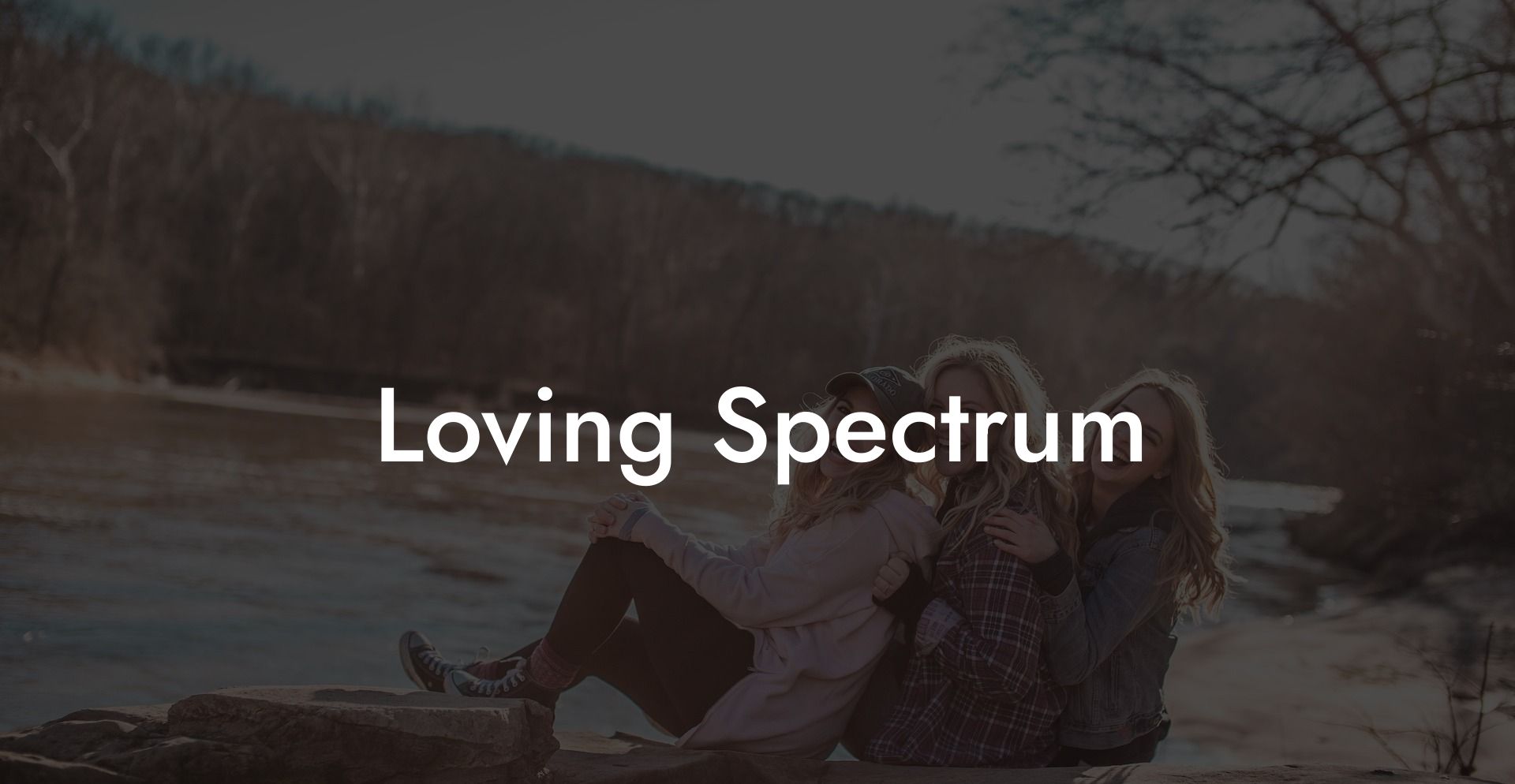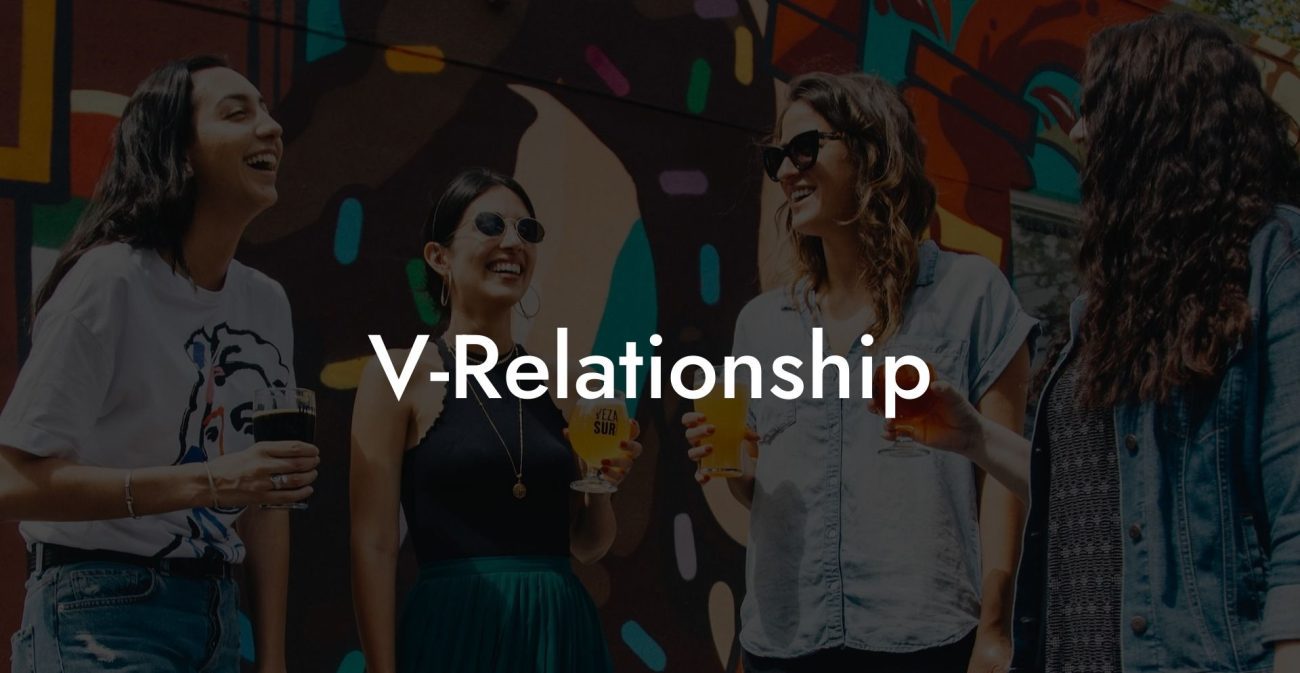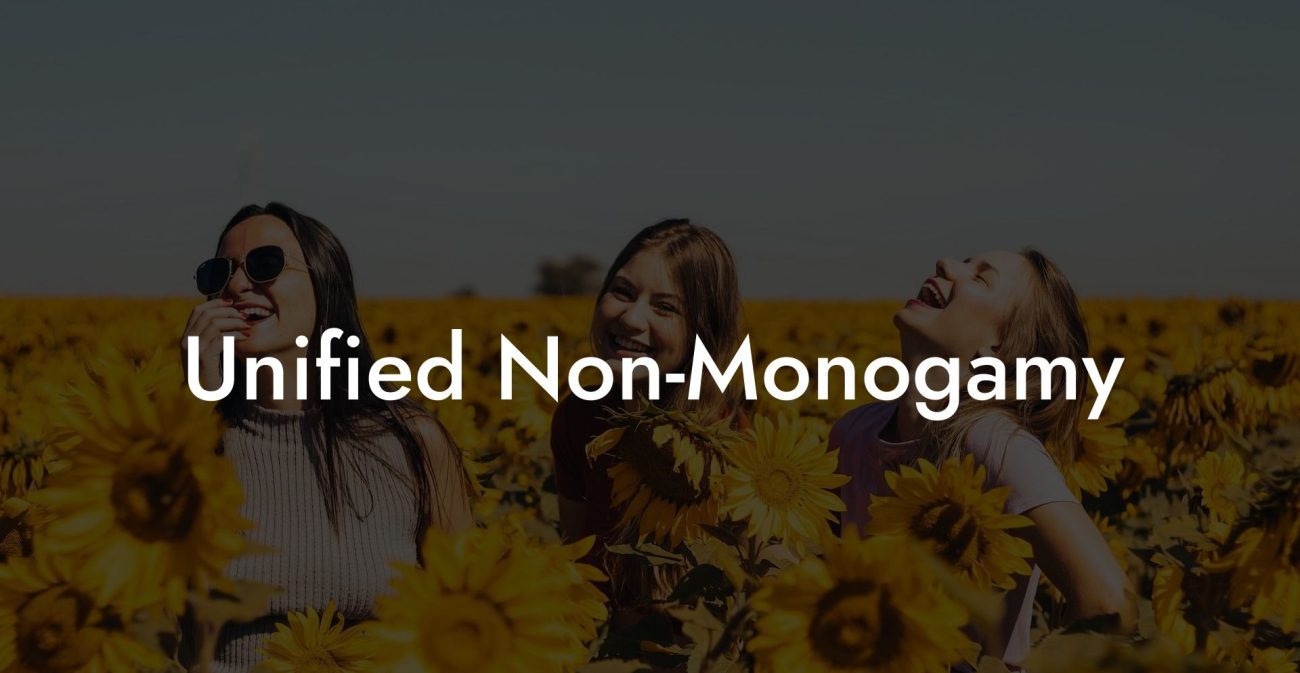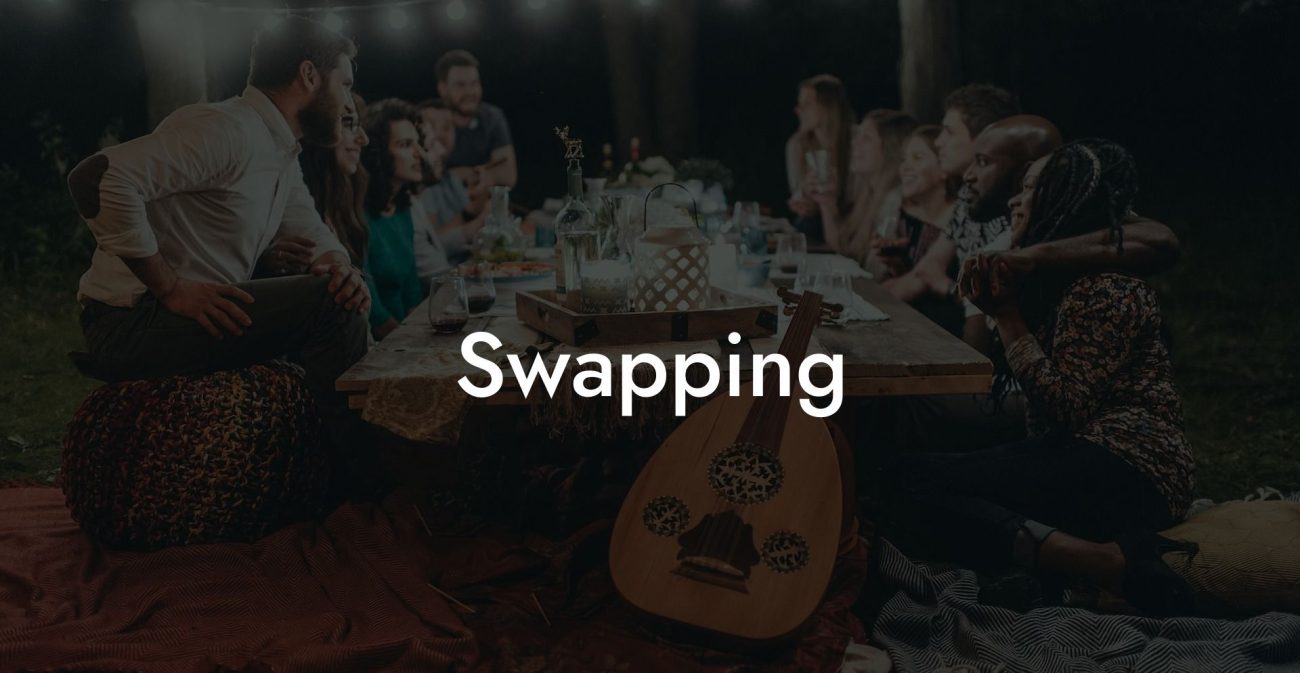Loving Spectrum

Imagine a vibrant canvas where every emotion, every connection, and every shared moment adds a distinct hue, together forming a radiant spectrum of love. Welcome to Loving Spectrum, a concept in ethical non monogamy that redefines intimacy as a continuous range of dynamic experiences. In this framework, love is not confined to one single shade; rather, it is an ever-expanding array of colors that shift and blend with every new interaction. Whether you feel the soft pastels of gentle affection or the bold, striking colors of passionate encounters, Loving Spectrum celebrates the full diversity of your emotional landscape.
Quick Links to Useful Sections
- The Ethical Non Monogamy Term: Loving Spectrum
- What Is Loving Spectrum?
- Core Principles of Loving Spectrum
- A Quick Video Explanation
- Historical and Cultural Perspectives on Loving Spectrum
- From Singular Love Myths to a Rainbow of Connection
- Cultural Shifts in Modern Relationship Models
- Everyday Dynamics of Loving Spectrum
- Living Your Emotional Palette
- Renegotiating Boundaries as Your Emotions Evolve
- Benefits of Embracing Loving Spectrum
- Deepened Emotional Connections
- Personal Growth and Empowerment
- Improved Communication and Conflict Resolution
- Collective Resilience and Shared Support
- Challenges of Loving Spectrum
- Managing Emotional Complexity
- Balancing Individual Needs with Collective Connection
- Adapting to Continuous Change
- Navigating External Judgment
- Frequently Asked Questions (FAQ)
- Resources and Community Support: Your Next Steps
The Ethical Non Monogamy Term: Loving Spectrum
What Is Loving Spectrum?
Loving Spectrum is the idea that love exists as a continuous range of emotional expressions rather than a fixed, singular experience. It recognizes that every relationship or encounter contributes a unique “color” to your overall experience of love. In ethical non monogamy, this means that you can simultaneously experience multiple forms of connection, each one adding its own nuance to the collective picture of who you are. Loving Spectrum encourages you to embrace every shade of intimacy, from deep, soulful connections to playful, lighthearted interactions, and understand that each one enriches your emotional world.
This approach challenges the traditional notion that love is limited or exclusive. Instead, it posits that your capacity to love expands as you welcome a variety of experiences, making your relationships more resilient, adaptable, and beautifully diverse. With Loving Spectrum, you are invited to explore and celebrate every facet of your emotional being, knowing that the full range of your feelings is what truly defines you.
Core Principles of Loving Spectrum
- Multiplicity of Emotions: Embrace the idea that love is experienced in a range of emotions, from tender care to intense passion, each contributing its own color to your emotional palette.
- Fluidity and Change: Recognize that your feelings and relationships are dynamic. As you grow and evolve, so too does the spectrum of love you experience.
- Holistic Integration: Combine various forms of intimacy, emotional, physical, intellectual, and spiritual, into a comprehensive, interconnected experience of love.
- Open Communication: Maintain honest, ongoing dialogue with your partners to ensure that every shift in your emotional landscape is understood and respected.
- Adaptive Boundaries: Continuously renegotiate your limits to reflect your evolving needs, ensuring that each relationship contributes positively to your overall well-being.
- Mutual Empowerment: Celebrate how every partner’s unique contribution enhances your personal growth and enriches your collective experience of love.
- Inclusivity: Value and welcome all forms of connection, knowing that every individual’s way of loving adds vibrancy to the overall spectrum.
A Quick Video Explanation

Historical and Cultural Perspectives on Loving Spectrum
From Singular Love Myths to a Rainbow of Connection
Historically, many cultures have portrayed love as a singular, idealized union, often emphasizing exclusivity and a narrow definition of romantic attachment. These narratives promoted the notion that true love was limited to one perfect, unchanging bond. However, as societal attitudes began to shift during the sexual revolution, feminist movements, and the rise of polyamory, people started to challenge these restrictive ideas.
Early pioneers in ethical non monogamy argued that love is far too complex to be confined to a single form. They envisioned a world where multiple relationships could coexist, each illuminating different aspects of human connection. This led to the emergence of a more expansive view, one that celebrated the full spectrum of emotions. Loving Spectrum emerged as a powerful metaphor to describe this evolution, symbolizing the idea that love can be as diverse and colorful as a rainbow, with every hue representing a different facet of your emotional experience.
Cultural Shifts in Modern Relationship Models
In today’s globalized and digitally connected society, the concept of Loving Spectrum resonates deeply. Millennials and Gen-Z, in particular, are redefining intimacy by embracing fluid, multi-dimensional relationships that defy traditional norms. The rise of social media, online communities, and progressive relationship podcasts has helped spread the message that love is abundant and multifaceted.
Modern narratives now emphasize that the capacity for love is limitless and that every unique connection enriches your life in its own way. Loving Spectrum encourages you to appreciate the variety of your relationships, recognizing that every interaction, whether fleeting or profound, plays an important role in the overall tapestry of your emotional world.
Everyday Dynamics of Loving Spectrum
Living Your Emotional Palette
Embracing Loving Spectrum in your daily life means allowing yourself to experience and express the full range of your emotions. It involves:
- Daily Reflections: Dedicate time each day to check in with yourself, through journaling, meditation, or simply a quiet moment of introspection, to identify which emotions are most prominent and why.
- Open Dialogues: Engage in regular conversations with your partners about how you’re feeling. Discuss the “colors” of your love, what aspects of your relationships are bringing out gentle pastels or vibrant hues, and celebrate these differences together.
- Creative Expression: Use artistic outlets, such as painting, music, or digital art, to visually represent your emotional landscape. This not only helps you process your feelings but also celebrates the diversity of your connections.
- Flexible Relationship Practices: Experiment with different ways of interacting, whether it’s a quiet evening of deep conversation, a spontaneous adventure, or a collaborative creative project, to capture the dynamic nature of your emotional spectrum.
Renegotiating Boundaries as Your Emotions Evolve
One of the key aspects of Loving Spectrum is the continuous adaptation of your relationship boundaries to reflect your changing emotional needs. This process involves:
- Regular Check-Ins: Schedule periodic discussions with each partner to review your current boundaries and explore whether they still serve your evolving needs.
- Feedback Loops: Encourage constructive feedback from all parties, ensuring that every voice contributes to the ongoing adjustment of your emotional agreements.
- Adaptive Agreements: View your relationship agreements as living documents that grow and change with you, ensuring that they remain in tune with your true self.
Benefits of Embracing Loving Spectrum
Deepened Emotional Connections
By acknowledging and celebrating the full range of your emotional experiences, Loving Spectrum allows you to build richer, more layered connections. Each relationship contributes a unique element, resulting in a comprehensive and resilient network of love.
- Layered Intimacy: The diversity of your connections creates a multi-dimensional emotional network that deepens with every new experience.
- Enhanced Empathy: Engaging with varied forms of intimacy helps you better understand your own feelings and those of your partners, fostering greater empathy and mutual support.
Personal Growth and Empowerment
Loving Spectrum is a journey of continuous self-discovery. By exploring the full range of your emotions, you gain valuable insights into your true desires, strengths, and areas for growth.
- Increased Self-Awareness: Regular reflection on your emotional experiences helps you identify your needs and learn from each relationship.
- Empowerment Through Expression: Embracing every shade of your love enhances your confidence and allows you to express your authentic self without reservation.
Improved Communication and Conflict Resolution
Open, honest dialogue is the cornerstone of maintaining a vibrant Loving Spectrum. By regularly discussing your emotional landscape with your partners, you create a space for resolving conflicts constructively and deepening mutual understanding.
- Proactive Check-Ins: Routine conversations help you address any issues before they escalate into conflicts, ensuring that every relationship remains healthy and supportive.
- Empathetic Engagement: Open discussions foster empathy and help all partners feel heard and understood, paving the way for effective conflict resolution.
Collective Resilience and Shared Support
The strength of a diverse emotional network lies in its collective resilience. When every connection contributes to your overall Loving Spectrum, you build a robust support system that can help you navigate life’s challenges.
- Shared Strength: A multitude of supportive relationships creates a safety net that bolsters your emotional well-being during tough times.
- Unified Growth: As every relationship evolves and adds to your emotional mosaic, the collective network becomes more adaptive and empowering.
Challenges of Loving Spectrum
Managing Emotional Complexity
With a vast array of emotional experiences, your love life can sometimes feel overwhelmingly complex. Balancing the varied “colors” of your emotional palette requires constant attention and self-reflection.
- Tip: Engage in regular journaling or meditation to process and understand your feelings.
- Tip: Schedule routine check-ins with your partners to ensure that every connection is nurtured and that boundaries are adjusted as needed.
Balancing Individual Needs with Collective Connection
Ensuring that your personal emotional needs are met while contributing to a broader network of connections can be challenging. Conflicts may arise when individual desires conflict with the overall vision of your Loving Spectrum.
- Tip: Maintain honest dialogue with your partners about your expectations and be open to negotiating boundaries that honor both personal and collective needs.
- Tip: Practice empathy and active listening to ensure that every perspective is considered in your emotional network.
Adapting to Continuous Change
Love, like a spectrum, is always shifting. As your experiences and relationships evolve, you must be willing to adjust your emotional boundaries and expectations. This ongoing process can sometimes create uncertainty.
- Tip: Embrace change as a natural and enriching part of your emotional journey, and view each adjustment as an opportunity for growth.
- Tip: Regularly revisit your relationship agreements and adjust your boundaries to reflect your current emotional state.
Navigating External Judgment
Despite modern advances in relationship diversity, traditional societal norms may still challenge your embrace of a multifaceted, dynamic love life. External criticism can lead to self-doubt or pressure to conform.
- Tip: Surround yourself with a supportive community that values diverse expressions of intimacy.
- Tip: Focus on the intrinsic value of your personal growth and the rich tapestry of your connections, letting external opinions fade away.
Frequently Asked Questions (FAQ)
1. What is Loving Spectrum in ethical non monogamy?
Loving Spectrum is the concept that love exists as a dynamic range of emotional expressions and connections. It embraces the idea that every relationship, whether romantic, platonic, sexual, or spiritual, adds a unique color to your overall emotional experience.
2. How does Loving Spectrum differ from traditional models of love?
Traditional models often view love as a singular, exclusive bond, while Loving Spectrum celebrates the multiplicity and fluidity of emotional connections, allowing for a richer, more varied experience of intimacy.
3. What are the core principles of Loving Spectrum?
Core principles include embracing diversity in connection, fluidity of emotional expression, holistic integration of different forms of intimacy, open communication, adaptive boundaries, and mutual empowerment.
4. How can I practice Loving Spectrum in my daily life?
Practice by engaging in regular self-reflection, maintaining open dialogues with your partners, creatively documenting your experiences, and being willing to adapt your emotional boundaries as your needs evolve.
5. What benefits does Loving Spectrum offer?
Benefits include deeper, more layered emotional connections, increased self-awareness and personal growth, improved communication and conflict resolution, and a resilient, supportive network of relationships.
6. What challenges might I encounter with Loving Spectrum?
Challenges can include managing the complexity of diverse emotional experiences, balancing individual needs with collective connection, adapting to continuous change, and navigating external societal pressures.
7. How important is communication in Loving Spectrum?
Communication is crucial, it ensures that every connection is nurtured, that boundaries are regularly renegotiated, and that your dynamic emotional landscape remains aligned with your true self.
8. Can Loving Spectrum be applied to both monogamous and non monogamous relationships?
Yes, the principles of Loving Spectrum are universal and can enrich any relationship model by promoting an expansive, multifaceted approach to love.
9. How do adaptive boundaries contribute to Loving Spectrum?
Adaptive boundaries allow your relationships to evolve naturally as your emotional needs change, ensuring that every connection remains healthy, consensual, and reflective of your current state.
10. What role does self-reflection play in Loving Spectrum?
Self-reflection is essential, it helps you understand your evolving emotional needs, track your personal growth, and adjust your relationships to remain aligned with your authentic self.
11. How do shared experiences enhance Loving Spectrum?
Shared experiences add depth and context to your emotional tapestry, creating a vibrant, interconnected network that enriches your overall love life.
12. Where can I find additional resources on Loving Spectrum and ethical non monogamy?
Additional resources include books like The Ethical Slut by Dossie Easton & Janet Hardy, podcasts such as Multiamory, and online communities like r/polyamory that explore innovative, adaptive approaches to love.
Resources and Community Support: Your Next Steps
- The Ethical Slut by Dossie Easton & Janet Hardy – A foundational resource that delves into ethical non monogamy and offers practical strategies for nurturing a rich, multifaceted Loving Spectrum.
- Podcasts: Listen to Multiamory and similar podcasts for expert insights, personal stories, and creative ideas on cultivating your Loving Spectrum.
- Online Communities: Join forums like r/polyamory to share experiences, ask questions, and connect with others who celebrate diverse expressions of intimacy.
- Workshops and Webinars: Attend events on relationship psychology, ethical non monogamy, and creative communication to deepen your understanding and expand your support network.
- Therapy and Counseling: Consider professional guidance if you need help managing complex emotions or navigating the evolving dynamics of your Loving Spectrum.
By engaging with these resources and applying the practical strategies outlined in this guide, you can fully embrace Loving Spectrum as a transformative approach to connection. Celebrate the full range of your emotional experiences, nurture each unique bond, and let your love expand into a rich, dynamic tapestry of authentic, empowered intimacy.
Lost & confused by all of the terms, types and seemingly made up 3 letter acronyms?? We've got you. Check out our Ethnical Non-Monogamy Dictionary >>
Useful Interruption: Not sure which relationship vibe fits you best? Take our Relationship Test, it’ll give you the real insight into your natural relationship style. Then, dive into our binge-worthy guides (from the tried-and-true to the “wait, that’s a thing?”) and find the perfect relationship type for your life:
- Monogamy
- Open Relationships
- Ethical Non-Monogamy
- Solo Polyamory
- Non-Hierarchical Polyamory
- Hierarchical Polyamory
- Relationship Anarchy
- Swinging
Now back to the main article but yeah take the test...












